Rebirth of an icon: How Lotus is picking up the EV baton and running with it
After years of financial turmoil, Lotus is going all in on electric cars. We tested the new Eletre to find out whether the actions match the words.
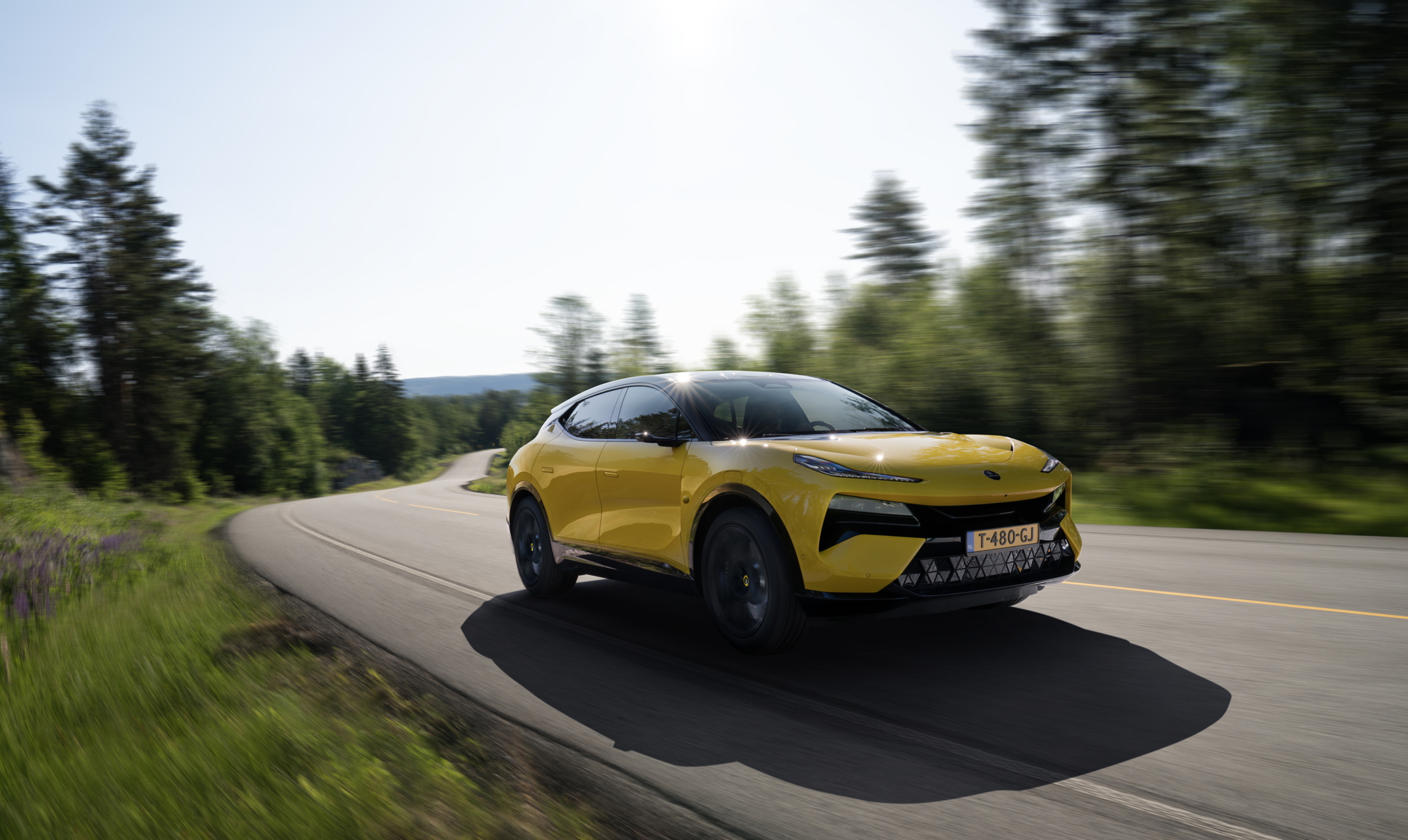

The first time I saw a Lotus was on Top Gear, in about 2004, when an Exige took on an Apache helicopter at Dunsfold Aerodrome. The idea was simple. Could this tiny, stocky, sportscar nimbly evade missile lock from the Apache, one of the most advanced weapons systems of its day? The answer was a resounding yes. If you are being chased by an Apache, a Lotus Exige is a handy vehicle to have if you want to carry on living.
The Exige was the very embodiment of what Lotus was supposed to be. A stiff, stocky chassis that was light and extremely sporty. It could accelerate like a bullet, was very good in the corners and looked quite evil. It was, by every definition, a fun little sports car. That’s what Lotus made, and has always made, since its founding by Colin and Hazel Chapman in 1952. You know the names of all the classics: the Elise, the Elan, the Esprit. Designed in Britain and made in Britain.
Chapman didn’t stop there. Team Lotus became one of the most recognised names in Formula One, winning seven constructors’ championships and six drivers’ championships. Again, you know the names: Senna, Andretti, Fittipaldi, Mansell, Clark and Hill. You would recognise the cars: the black-and-gold livery, the ‘John Player’ sponsorship. Red Bull’s Adrian Newey is considered the finest designer in the history of Formula One; his favourite car? The Lotus 49. He likes it so much that he owns one and still races it.
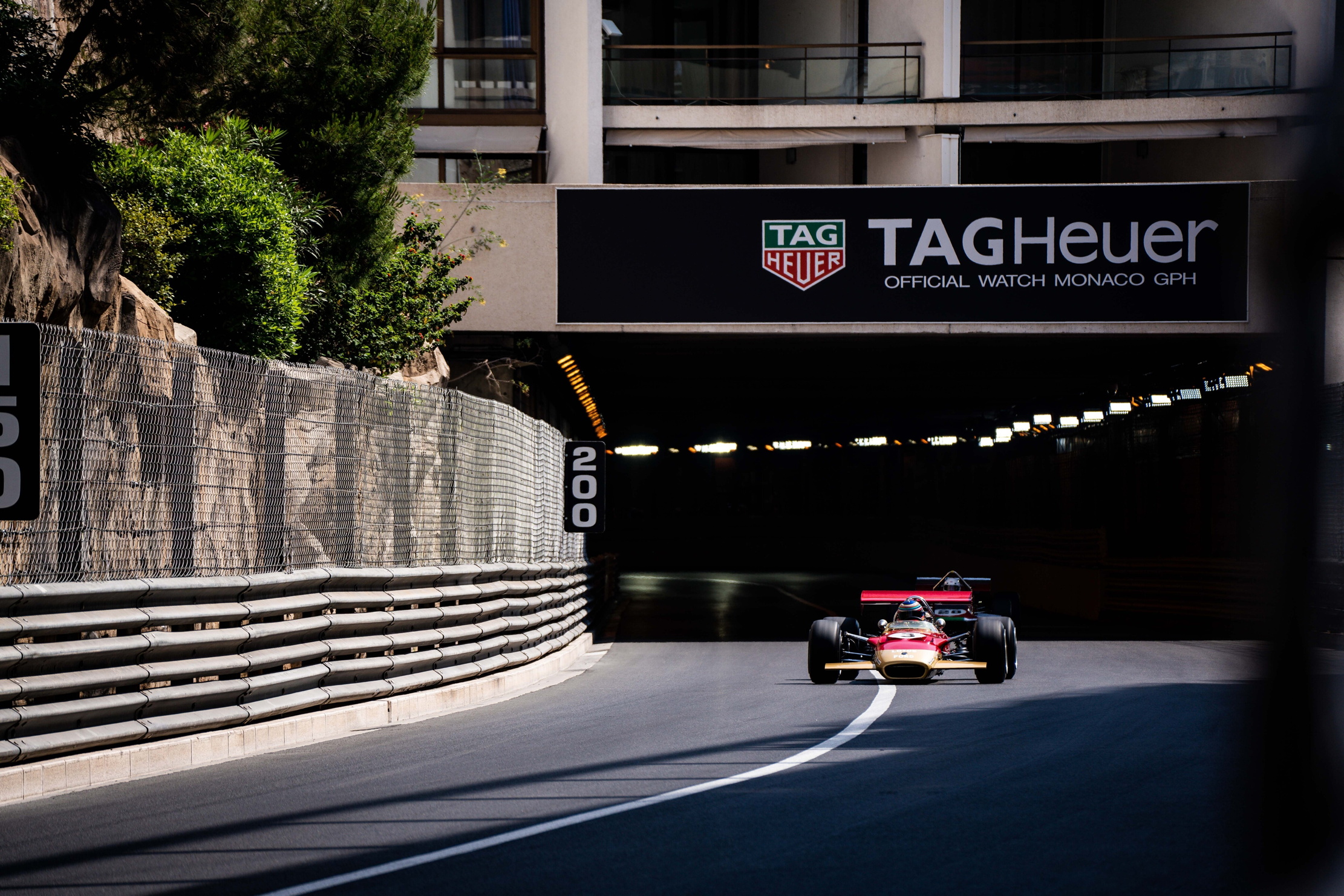
Adrian Newey driving his Lotus 49 around Monaco this year.
On a recent visit to Lotus’s HQ at Potash Lane in Hethel, Norfolk, I was lucky enough to see a lot of those cars. I got to touch the actual tyre that Ayrton Senna was using when he won his first Grand Prix. I saw a Lotus 49 and original design drawings of world-championship winning cars. At the Classic Team Lotus shop, you have to be deft on your feet, otherwise you might accidentally step through a million-pound front wing and a piece of heritage. There’s a thrill to this game of danger hopscotch. Not the same thrill as driving a Formula One car, obviously, but a thrill nonetheless.
This is an awful lot of words to say that Lotus has a rich tradition of making pretty sports cars that are fast and fun to drive. Despite this, things haven’t always gone to plan. In the 1980s, cars were struggling to sell. The name Lotus became an acronym for Lots of Trouble Usually Serious. Chapman died, and the company changed hands a few times, keeping its head just above water until it was bought by the Chinese billionaire Li Shufu and his business Geely in 2017. In 2021, Lotus announced that, by 2028, it would produce only electric cars and that production would increase from 1,500 cars each to ‘tens of thousands’. To do this, the company will spend about £2 billion. These are a lot of words to say that Lotus is back.
But not back, perhaps, as we know them. Lotus’s current lineup of cars consists of the Emira (the final Lotus vehicle powered by an internal combustion engine), the Evija hypercar (a limited run of 130), the Emeya (an electric GT car) and the Eletre (it’s luxury ‘hyper’ SUV). A certain type of person might wonder what the Chapmans would have made of Lotus producing EVs or, indeed, an SUV. But times are changing. You can either get ahead of the curve or get left behind. Lotus have chosen to get ahead, and with aplomb.
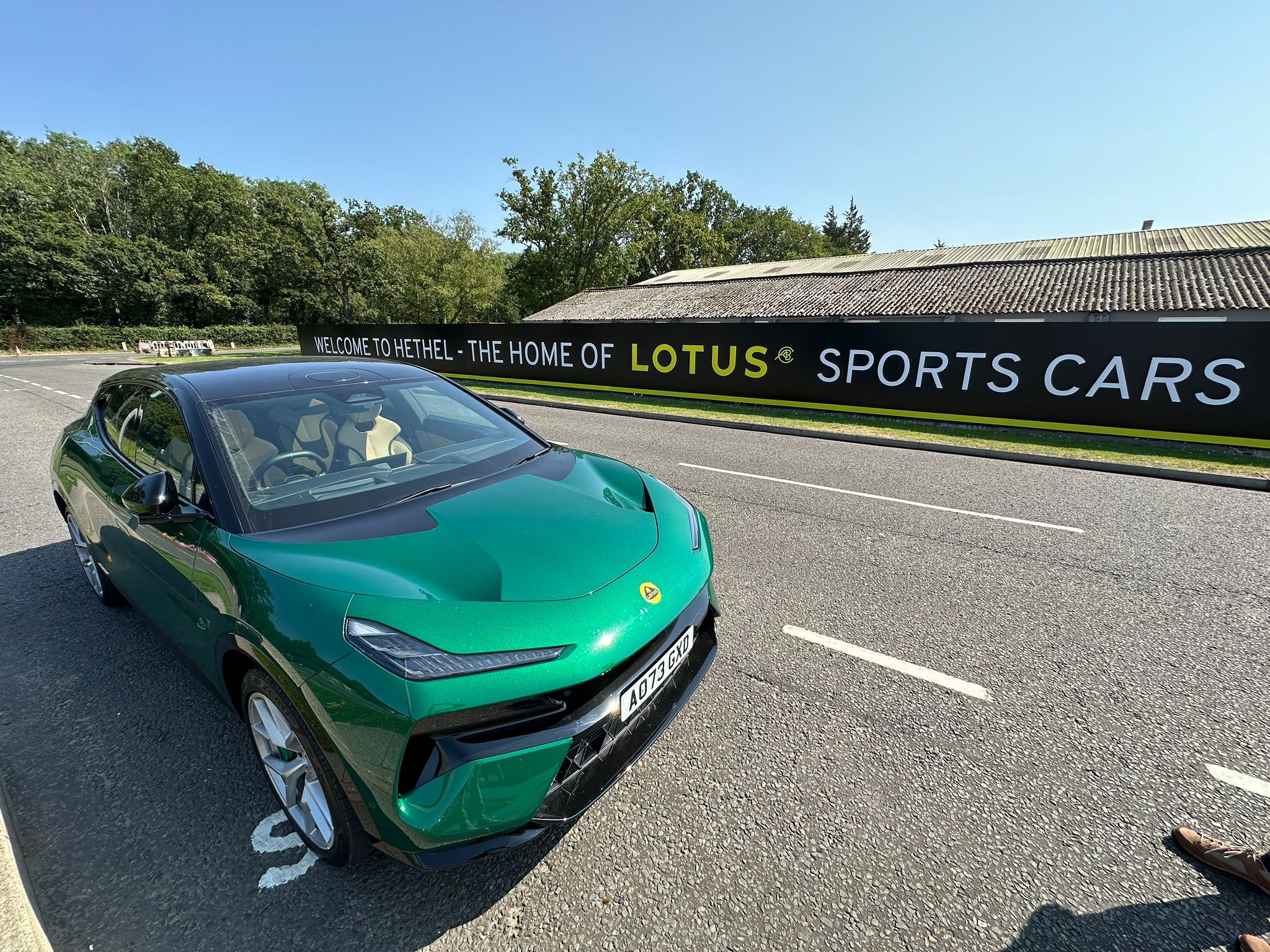
The Eletre S that I reviewed, pictured outside the company's Hethel headquarters.
I was given an Eletre to drive for a week earlier in the summer and I was completely enamoured with it. It looks great, it drives fantastically well (and is alarmingly quick), it’s comfortable and it’s practical. It works, which is not something that a lot of people have said about Lotus.
Exquisite houses, the beauty of Nature, and how to get the most from your life, straight to your inbox.
Let’s begin with the outside. Since EVs don’t have traditional petrol engines that go in traditional places, designers can be a bit more creative with how they style things. Lotus have indeed been very creative. The front of the car looks wide and aggressive in places, with lots of big vents and air-flow intakes giving it an extremely racy expression. From certain angles it looks like it’s smiling, but in a ‘thanks-but-I-already-knew-that’ kind of way.
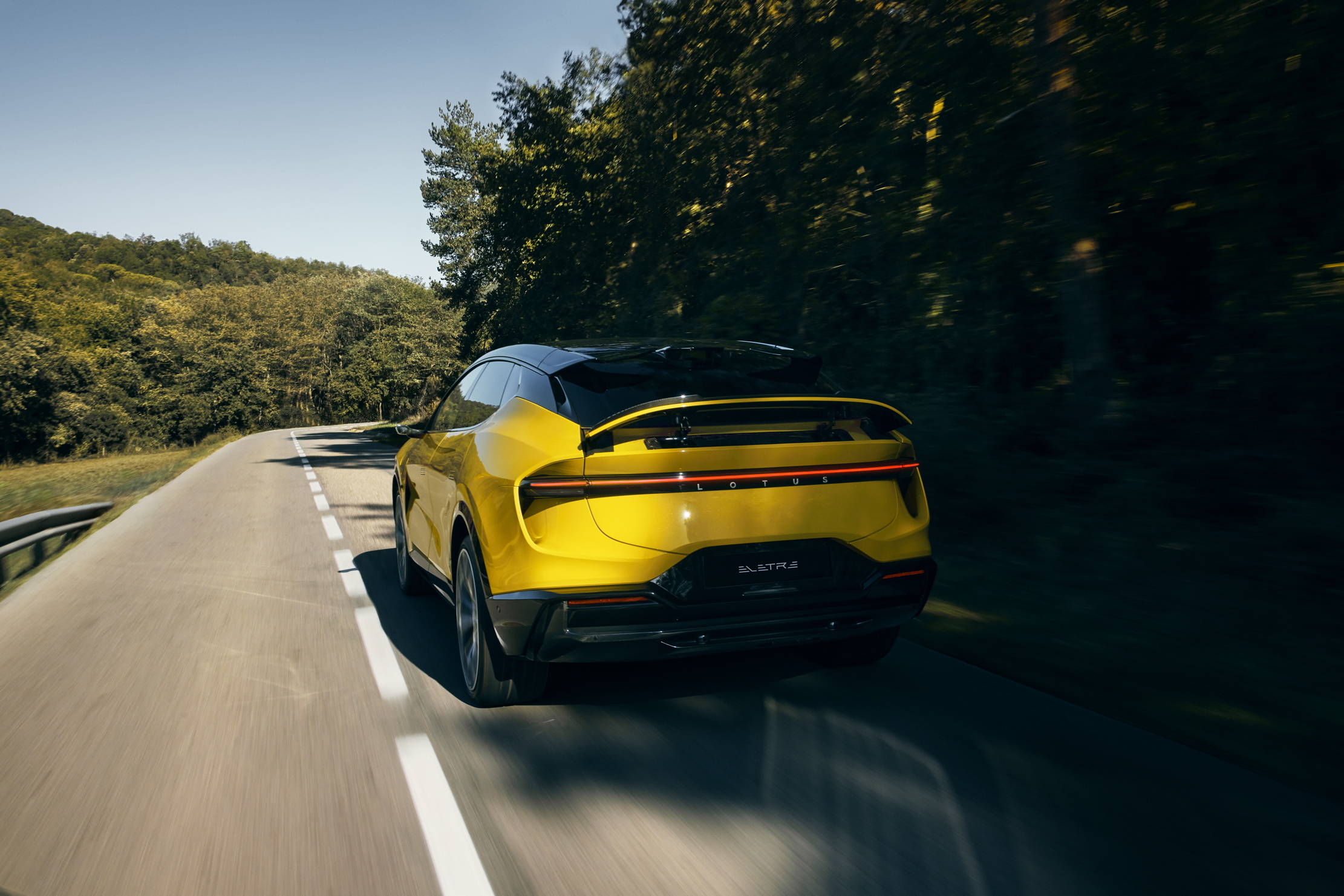
I was particularly taken with the rear end of the car. Shown here with its active spoiler deployed.
The back looks tremendous, with the single strip light running the entire width of the car and I very much liked the split fins on top of the boot. What this car is is big — five metres long and more than two metres wide. It is an SUV I suppose, but it’s perhaps just on the wrong side of ‘city practical’. But it does a fine job balancing it’s Lotus-ness (looks like it wants to go fast) with its practicality (room for people and things).
Inside is even better. There’s heaps of space for either four or five people, depending on your configuration, a spacious boot, another smaller boot in the front (where a petrol engine usually goes) and it comfortably housed a two-metre tall man (me) in the driver’s seat without crushing the legs of the passenger behind me.
It’s also an astoundingly comfortable place to be. The seats are plushy and excellent in ‘comfort’ mode, it’s very well lit, there’s lots of nice things to play with and it just feels extremely luxurious. Everything feels excellent to touch, and the soundsystem is terrific. Connectivity with smartphones and so on is easy enough to figure out and driving the car from London to Norfolk was an absolute breeze. It can eat up the miles with ease.
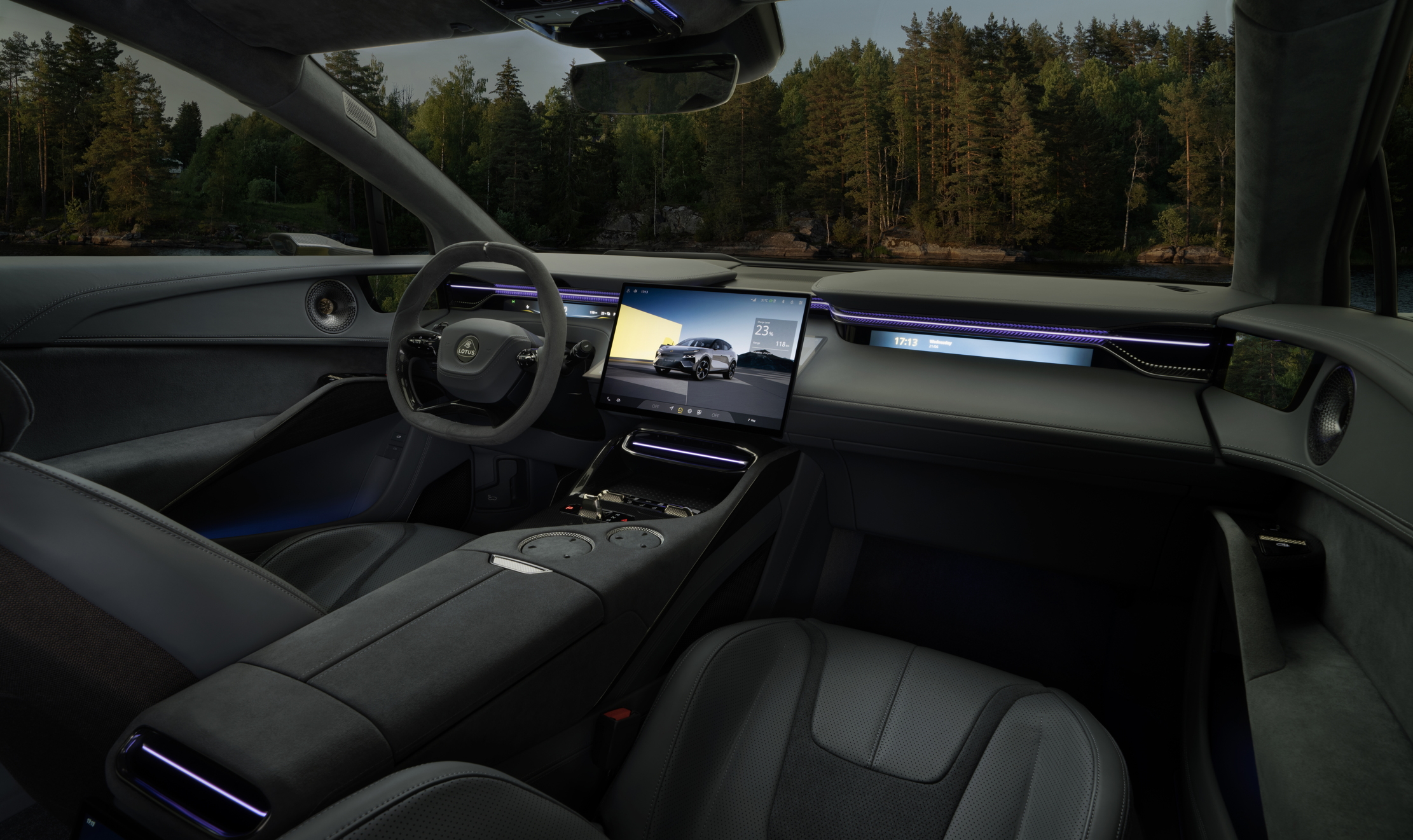
The interiors are sublime: comfortable and stuffed full of technology.
But the best thing to do in an Eletre is just drive it. This is where Lotus have really excelled, because not only have they created a car that works in a modern age, with usable technology and astounding levels of luxury and comfort, it still goes like a sports car and feels like one to drive. The suspension is stiff and firm when you want it to be, so going around tight corners in the countryside you feel perfectly in balance, not something that is easily achieved in quite a tall car. The acceleration is phenomenal.
And when you put it it into ‘sport’ mode, the seats give you a tight little hug that lets you know it’s time to drive. 60MPH is reached in about 4.5 seconds in the ‘S’ version, which is what I drove, with the even more powerful ‘R’ version getting there in a fraction under 3, if you really have places to be. And be assured, the enormous brakes are more than capable of slowing this 2.6 ton car down in the blink of an eye (did I mention that batteries are quite heavy?).
The steering is snappy and responsive for a big car, so you will soon forget you are driving a big car, and think you are driving a little fast Lotus, the likes of which you and I grew up with. The Eletre was a big gamble for Lotus, but one that it has pulled off with aplomb. Using the immense power that EVs provide, you can have a big comfortable practical car that people want to use every day, and still make it feel like a small sports car. A large part of this is also down to the clever aerodynamics. Lots of vents and intakes direct air over the car where you want it, and those fins I mentioned earlier? They direct air down the back of the car and over the active spoiler, keeping everything pressed into the road.
There will be people who never fully accept that the nerdy Norfolk brand of Lotus no longer exists. And that’s fine, because you can’t please everyone. But the Eletre shows that a British brand can still design cars that can compete and out-compete almost anything else on the road. Could it escape an Apache helicopter on a test-track? Probably not, but then again, that’s not actually a real issue most people face. Can it get four people from A to B in comfort and, if so desired, quickly? Absolutely yes.
On the road: Lotus Eletre S
- Price: £105,750 (on the road); £122,255 (as driven)
- Power: 603hp
- Weight: 2,595kg
- Top speed: 160mph
- 0-60mph: 4.5 seconds
- Range: 308 miles (combined)
- Charge time: Charging from 10~80% with 420kW DC: 20 min

James Fisher is the Digital Commissioning Editor of Country Life. He writes about motoring, travel and things that upset him. He lives in London. He wants to publish good stories, so you should email him.

